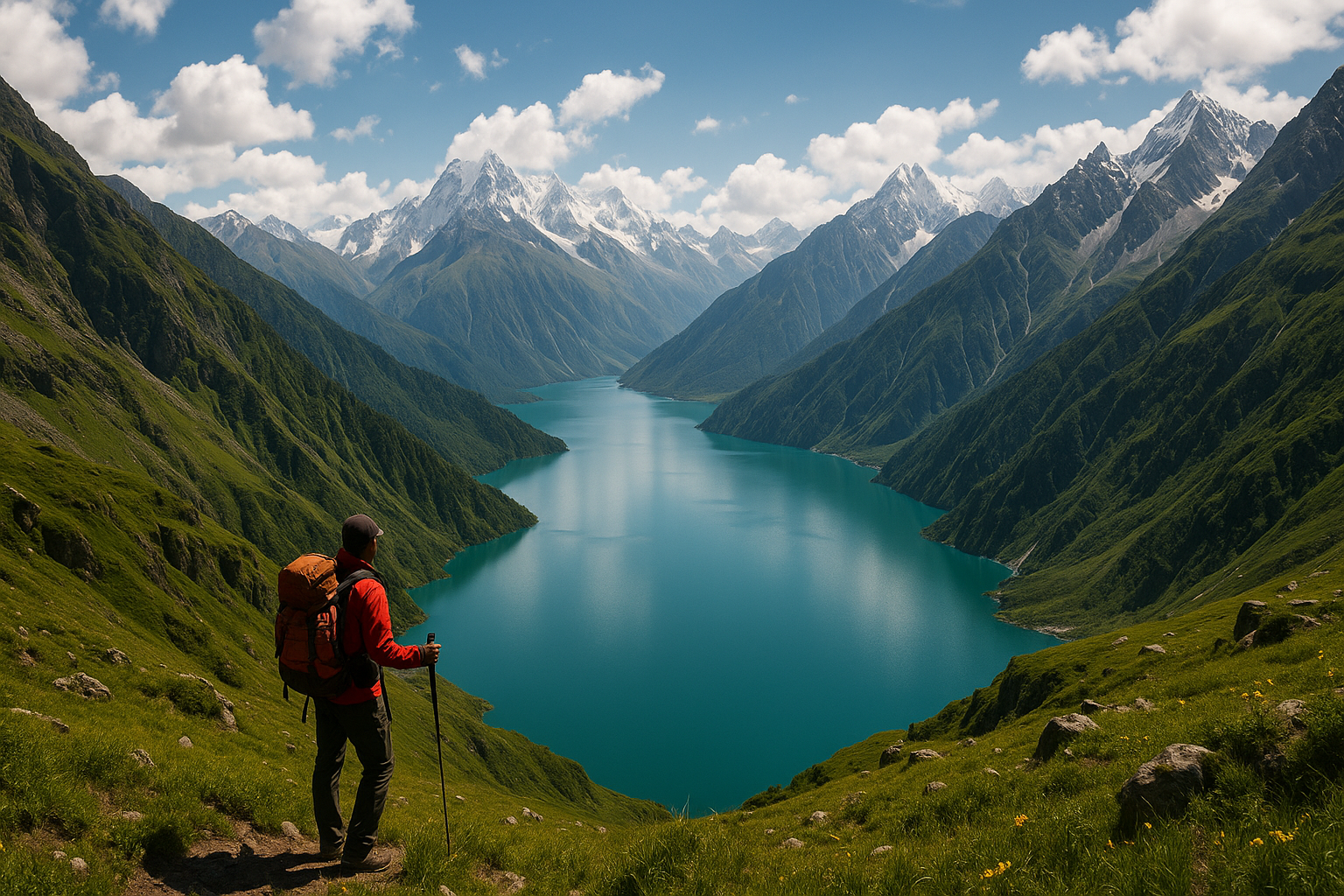Tourism Potential of Sudurpaschim: Turning Nepal’s Remote Province into a Global Magnet
The report by the Ministry of Industry, Tourism, Forest and Environment of Sudurpaschim Province and CRED-Nepal highlights the region’s vast natural, cultural, and spiritual wealth as a foundation for sustainable tourism-led growth. It envisions Sudurpaschim as Nepal’s “undiscovered frontier,” where eco-tourism and community participation can drive inclusive development and regional prosperity.

The study "Tourism Potential of Sudurpaschim Province, Nepal," prepared by the Ministry of Industry, Tourism, Forest, and Environment of Sudurpaschim Province in collaboration with the Centre for Research and Development Nepal (CRED-Nepal), paints a vivid picture of a region rich in natural beauty, cultural heritage, and untapped economic opportunity. It argues that Sudurpaschim, often seen as Nepal's remote periphery, is in fact a hidden tourism powerhouse that can redefine sustainable travel in South Asia. Stretching from the icy Himalayas to the subtropical plains of the Terai, the province is home to breathtaking diversity in landscapes and communities. The report highlights how the unique traditions of the Tharu, Chhetri, and Dalit peoples, combined with the region's pristine nature, could shape a thriving eco-cultural tourism model rooted in authenticity and community inclusion.
A Land of Untouched Wonders
From the towering Api and Saipal peaks in the north to the fertile lowlands of Kanchanpur and Kailali, Sudurpaschim encapsulates Nepal's full ecological spectrum. The study details a range of attractions that remain largely off the radar for most travelers. Bajhang and Darchula boast pristine trekking trails and sacred routes leading toward Mount Kailash and Mansarovar. The Api Nampa Conservation Area, rich in biodiversity and panoramic views, offers enormous potential for adventure and eco-tourism. In the mid-hills, Dadeldhura and Baitadi are home to historic and cultural landmarks such as Amargadhi Fort and Ugratara Temple, symbols of the region's layered heritage. Moving south, the Terai's crown jewel, Shuklaphanta National Park, draws attention with its herds of swamp deer, migratory birds, and vibrant wetlands. The Dodhara Chandani suspension bridge, one of Nepal's longest, adds an element of engineering wonder and accessibility to the natural allure. Together, these destinations form a potential tourism circuit that connects mountain majesty with cultural charm and lowland tranquility.
Tourism for Inclusive Prosperity
The report envisions tourism as a cornerstone for local development, capable of generating jobs, reducing migration, and empowering women and youth. It emphasizes community-based tourism models that channel revenue directly into rural households. Through homestays, traditional handicrafts, organic food production, and local guiding services, residents can become active participants in shaping the tourism experience. Such engagement not only distributes benefits more equitably but also helps preserve local cultures and traditions. The authors argue that true success in tourism lies not merely in visitor numbers but in measurable improvements in living standards, education, and gender equity.
Challenges on the Road Ahead
Despite its promise, the province faces formidable barriers. Poor connectivity remains the single biggest obstacle, with rugged terrain limiting access to remote districts like Bajura and Darchula. Air links are sparse, with Dhangadhi Airport serving as the only major gateway. The report calls for strategic investment in transport corridors, better road infrastructure, and improved digital connectivity to unlock remote destinations. Accommodation shortages and weak hospitality infrastructure further constrain growth. Yet, these gaps are also seen as opportunities for sustainable development through eco-lodges, digital tourism platforms, and public-private partnerships that balance comfort with conservation.
Bridging Borders and Building Partnerships
Sudurpaschim's geographical position offers immense potential for cross-border tourism, especially with India's Uttarakhand and Uttar Pradesh, and with Tibet to the north. The report envisions tourism circuits that integrate shared religious and cultural heritage across borders. The Dodhara Chandani bridge and Gaddachauki checkpoint could become vital gateways for Indo-Nepal tourism flows, particularly for pilgrims traveling to Hindu sacred sites like Badimalika and Ghodaghodi. Collaborative marketing, regional fairs, and border infrastructure improvements are proposed to enhance regional cooperation and make Sudurpaschim a hub of spiritual and cultural exchange.
Sustainability at the Core
The authors strongly advocate for a model of tourism that protects, rather than exploits, the environment. They recommend community-led conservation initiatives in areas like Shuklaphanta National Park and Api Nampa Conservation Area, along with strict waste management and responsible trekking policies. The emphasis is on long-term ecological resilience and harmony between visitors and nature. The report aligns with global sustainable tourism principles, arguing that Sudurpaschim can serve as a benchmark for balancing growth with environmental stewardship.
The study calls for a robust institutional framework that empowers local governments, strengthens tourism boards, and fosters skill development. It recommends branding Sudurpaschim as Nepal's "Undiscovered Frontier," combining untouched wilderness, spiritual depth, and cultural warmth. With improved infrastructure, regional collaboration, and strategic promotion, the province could transform into a world-class destination, where sustainable tourism drives inclusive prosperity while keeping the soul of Nepal's far west alive.
- FIRST PUBLISHED IN:
- Devdiscourse









